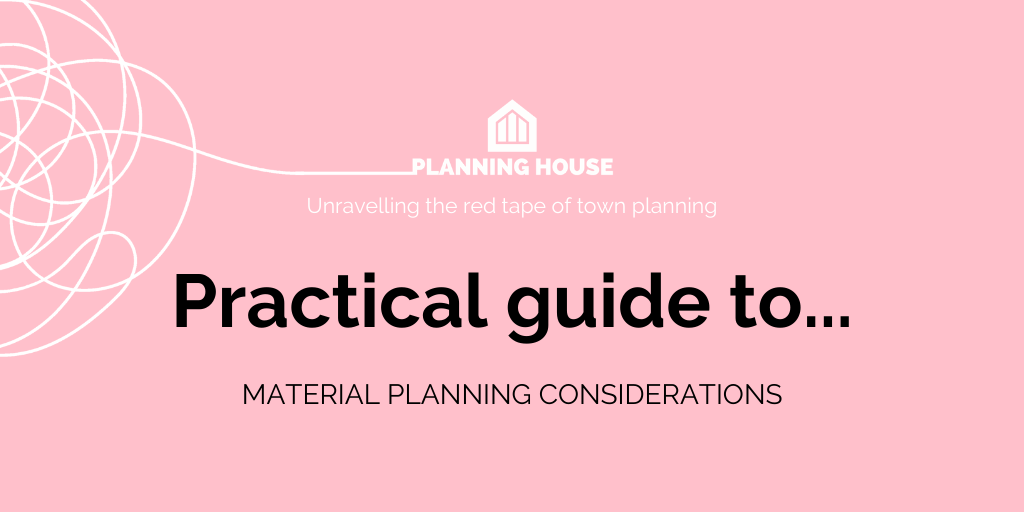When planning permission is being sought out for a new development, there are an endless number of potential objections and issues that may be raised by concerned local residents.
Part of the planning process involves determining which of these concerns are valid from a planning perspective and, subsequently, how much weight each concern has in determining the outcome of the planning application.
So how does a local planning authority decide what should be taken into account?
Material planning considerations are issues that should be discussed when deciding whether to grant planning permission. This guidance makes it easier for people embarking on the planning process to understand which issues raised are relevant from a planning standpoint.
What is a Material Planning Consideration?
Broadly speaking, material planning considerations are determined from the viewpoint that planning is concerned with public interest. Therefore, the ways in which land use works in favour of or against this are of relevance.
As a result, material planning considerations include things that have the potential to affect the wider community, covering things like outlook, contaminated land, smells or fumes and adequacy of parking spaces etc.
What is not a Material Planning Consideration?
Though there are a wide range of issues that are classed as material planning considerations, some common issues are not able to be considered by local planning authorities. As material planning considerations are concerned with public interest, more private objections are unlikely to be taken into account.
For example, perceived loss of property value, loss of views, boundary disputes and personal opinions about the applicant are not considered to be material. Though these concerns are often understandable, local planning authorities are only able to make judgements based on material planning considerations.
How is the Weight of an Issue Determined?
In general, issues raised in relation to a proposed development are more likely to be seriously considered if they are supported by relevant evidence.
It is up to the decision maker to determine the weight of a particular issue, however officers should evidence how they have considered each relevant issue and determined its weight. In each case, an Officer Report (or Committee Report) is produced discussing the details, and these are generally available to view on the Council’s Planning Public Access System where you can view the documents associated with an application.
If you’re interested exploring further what issues constitute a material planning consideration, take a look at this more comprehensive list of what does and doesn’t qualify in our DOWNLOAD.
Related Content:
If you’re not sure of how to comment on an application, take a look at our top 10 tips for avoiding the title of NIMBY (Not In My Back Yard) when commenting on a development proposal.
If you’re progressing with a planning application, or want to know more details on the planning process take a look at our FREE eBook Town Planning, The Basics… Application Process.
And if you need help to progress a development take a look at our blog When to Hire a Town Planner, which also has a download on Steps to Choosing a Town Planner.


